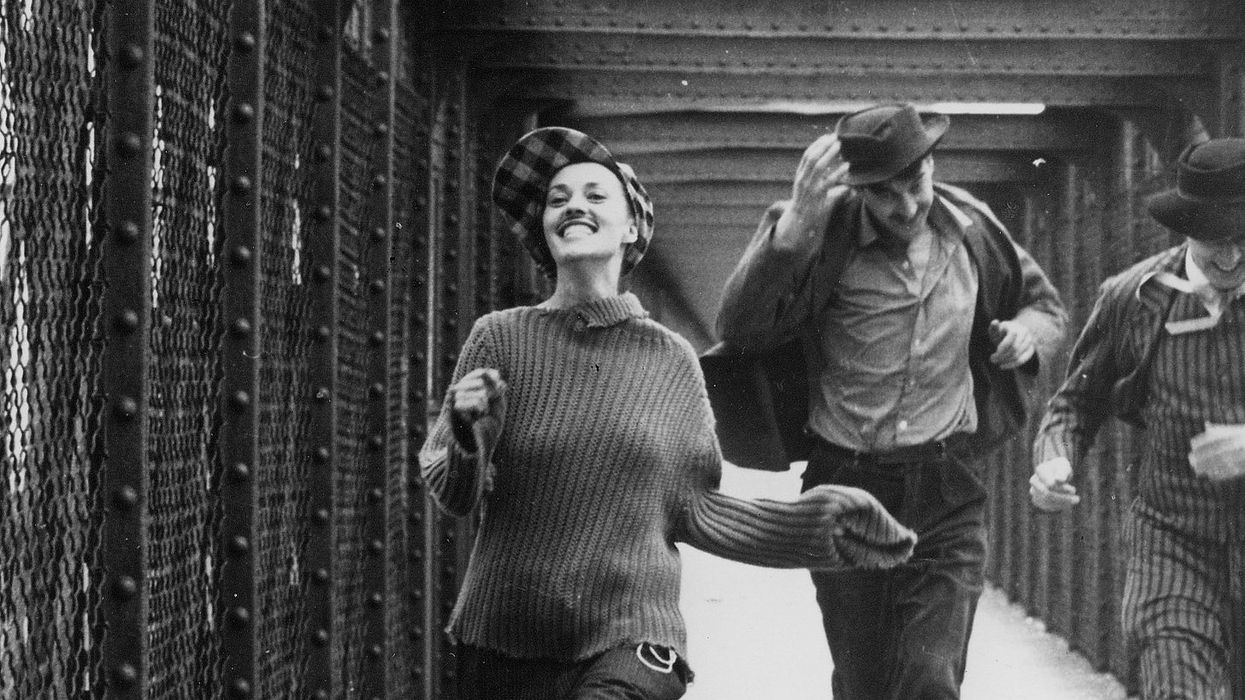What Was the French New Wave in Cinema? (Definition and Examples)
The French New Wave influenced some of your favorite filmmakers.

Sometimes we get so swept up in stories about Hollywood that we forget that cinema is worldwide. People are making movies all over and influencing each other as those movies travel and are seen by audiences across the globe. There have been several seismic shifts in movie history that changed motion pictures, and one of them is the rise of the French New Wave.
The New Wave is a film movement that rose to popularity in the late 1950s in Paris, France. The idea was to give directors full creative control over their work, allowing them to favor improvisational storytelling instead of strict narratives. The results changed the world.
Let's look at how this all happened.
Table of Contents
What Was the French New Wave in Cinema?
Alexandre Astruc's manifesto "The Birth of a New Avant-Garde: The Camera-Stylo" (published in L'Écran on 30 March 1948) puts forward the idea that "cinema was in the process of becoming a new means of expression on the same level as painting and the novel... a form in which and by which an artist can express his thoughts, however abstract they may be, or translate his obsessions exactly as he does in the contemporary essay or novel. This is why I would like to call this new age of cinema the age of the caméra-stylo."
This essay inspired many French filmmakers of the time to branch out and try new things.
New Wave filmmakers, including Jean-Luc Godard, Agnès Varda, Éric Rohmer, Jacques Rivette, and Claude Chabrol wanted to experiment with film form and style but didn't have the budgets to do it. Instead of succumbing to the studio stylings, they favored portable equipment to have a run-and-gun style. Techniques included fragmented, discontinuous editing, and long takes that allowed actors to explore a scene. The combination of realism, subjectivity, and commentary allowed these movies to have ambiguous characters, motives, and even endings that were not so clear-cut.
And so the French New Wave was born.

The French New Wave Definition
The New Wave is a film movement that emerged in the late 1950s in France. The movement was characterized by its rejection of traditional filmmaking conventions in favor of experimentation and personal expression.
When Did the French New Wave Happen?
The French New Wave was roughly between 1958 and 1964, with scattered titles adding to this movement until around 1973.
This art came out of some hard times. Shortly after World War II, France was incredibly poor and tended to fall back on the old popular pre-war traditions. But as new artists emerged, they were broke. They couldn't afford to make those classical French movies. Therefore, they had to invent a new way to shoot and edit without many resources.
What Was the First French New Wave Movie?
Truffaut credits the American film Little Fugitive (1953) by Ruth Orkin, Ray Ashley, and Morris Engel as the movie that started the French New Wave.
Truffaut said, "Our New Wave would never have come into being if it hadn't been for the young American Morris Engel, who showed us the way to independent production with [this] fine movie."
But that wasn't the first French movie. Chabrol's Le Beau Serge (1958) is traditionally credited as the first New Wave feature.
Varda's La Pointe Courte (1955) was made before that movie, but it did not have a commercial release until 2008.
Along with these titles, Truffaut's The 400 Blows (1959) and Godard's Breathless (1960) achieved mainstream success and helped the New Wave travel all over the world. These movies also made a lot of money, making them commercially viable and embraced not just for their art.

What Are Some French New Wave Characteristics?
When it comes to these titles, some tangible characteristics stick out and signify which movies fall into the New Wave category. The main one is the rejection of classical filmmaking, with a focus on experimental and/or avant-garde techniques.
These movies also featured existential themes. They wanted to showcase the individual and the chaos of human existence. They had stories rife with irony and sarcasm.
They also used homage heavily, stealing from world cinema and their compatriots.
The French New Wave Examples
There are many wonderful examples of films from the French New Wave. There are a ton on the Criterion Collection for your viewing pleasure. But I wanted to assemble a top 10 that I think would get any film lover on the right track.
Some Great French New Wave films
- The 400 Blows (1959)
- Hiroshima mon amour (1959)
- Breathless (1960)
- Les Bonnes femmes (1960)
- Shoot the Pianist (1960)
- Lola (1961)
- Adieu Philippine (1962)
- Cléo from 5 to 7 (1962)
- The Fire Within (1963)
- Le Mépris (1963)
- The Umbrellas of Cherbourg (1964)
- Claire’s Knee (1970)
- Céline and Julie Go Boating (1974)

How Did the French New Wave Inspire the Rest of the World?
If you've attended film school or read much film theory, then you know about the French New Wave. Even after the movies stopped being made, it inspired many other international movements like the Danish directors of Dogme 95, the Brazilian filmmaking of Cinema Novo, and New Hollywood. You can see these influences across Woody Allen, Spike Lee, and even in the mumblecore films of the 90s and 2000s.
Chances are, your favorite filmmakers were inspired by this group of French directors who challenged the system and did their own thing.
Summing Up the French New Wave in Cinema
It's hard to summarize how much of an effect the French New Wave had on cinema as a whole. The ripple effects are still felt today, and lucky for us, the movies are regularly available to watch and delight in. At the movement's heart was the idea that anyone should be able to make a movie, and that sentiment has lived on today.
What are some of your favorite French New Wave films or films inspired by it? Let us know in the comments.












